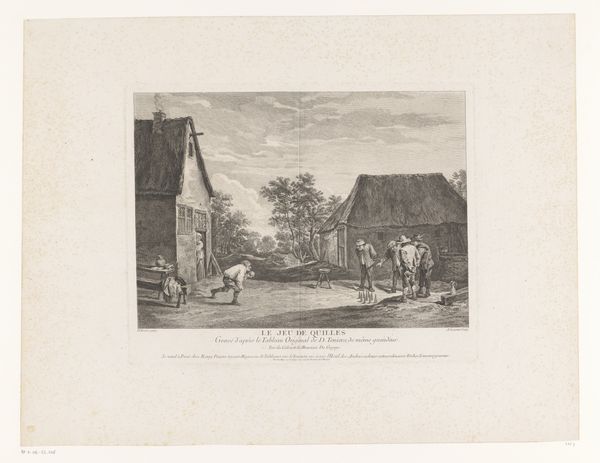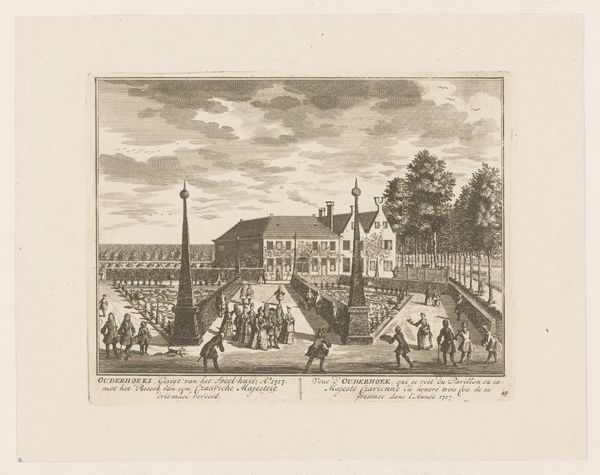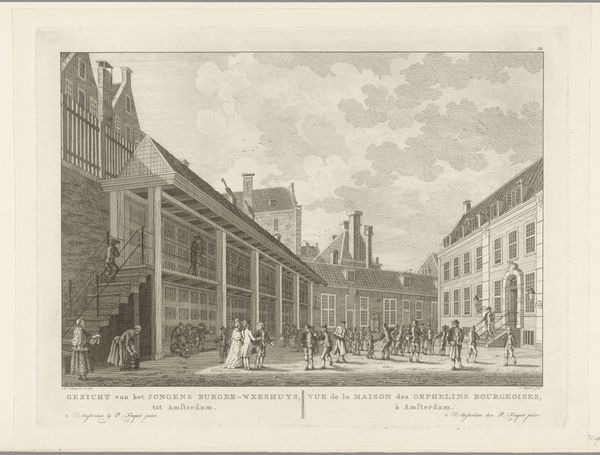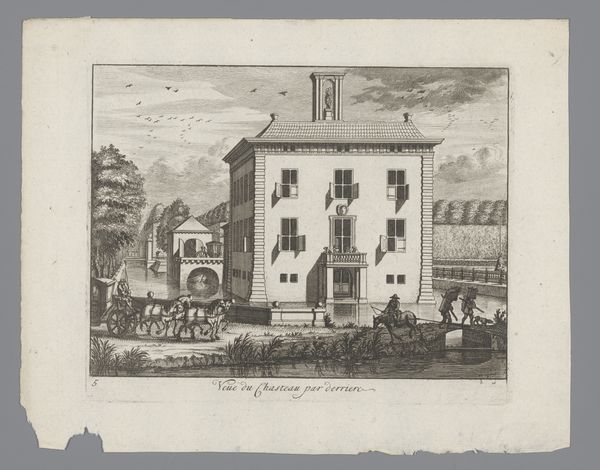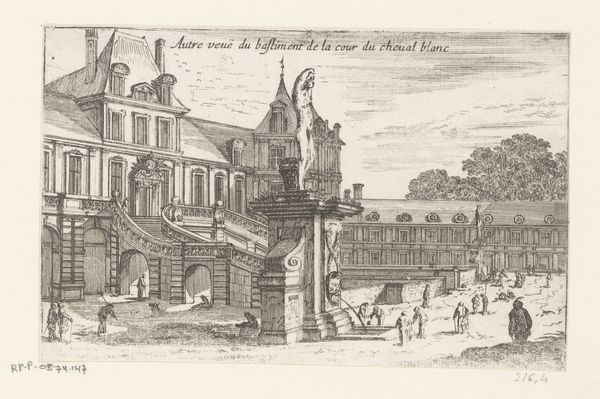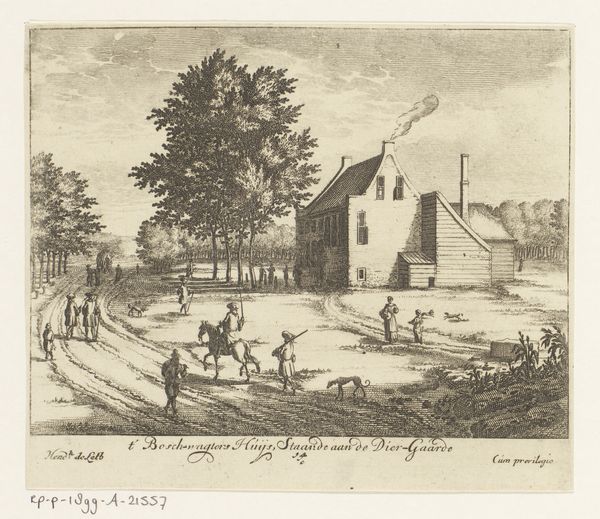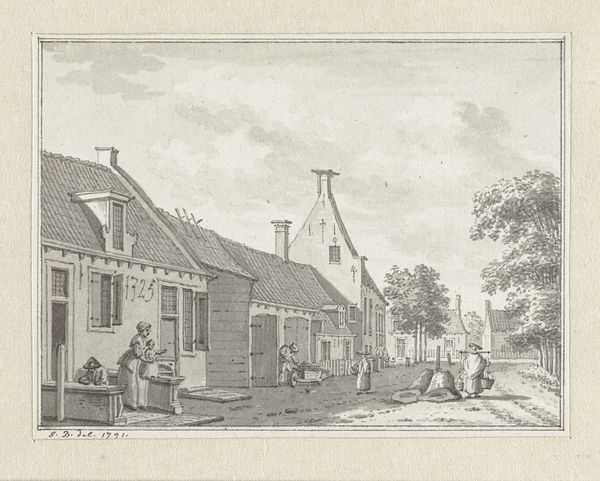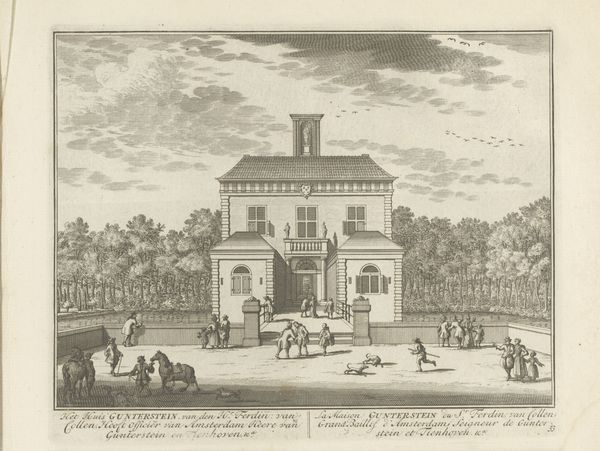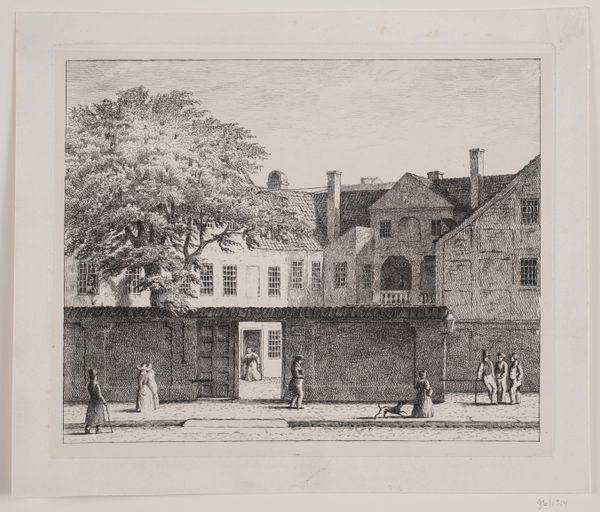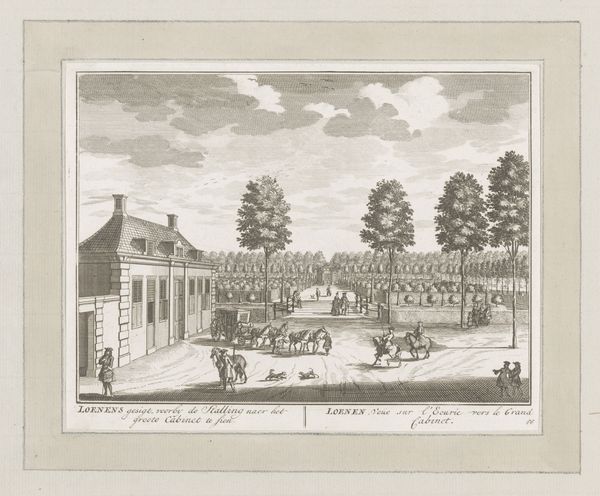
print, paper, engraving
#
dutch-golden-age
# print
#
landscape
#
paper
#
form
#
line
#
cityscape
#
engraving
#
realism
Dimensions: height 190 mm, width 297 mm
Copyright: Rijks Museum: Open Domain
Curator: This is "Gezicht op het Nieuwezijds Herenlogement te Amsterdam," a cityscape captured between 1663 and 1664 by Jacob van Meurs. Editor: It’s fascinating, really. I am drawn to the rather sparse depiction. Despite the clear lines of the buildings, the image feels imbued with a kind of melancholy, or perhaps even a stark societal critique conveyed through this visual economy. Curator: Interesting. This print, executed in engraving on paper, depicts the Nieuwezijds Herenlogement, or "Gentlemen's Lodging" in Amsterdam. Consider its place in the rapidly urbanizing Dutch Republic; places such as this became vital infrastructure, reflecting shifting demographics, the burgeoning merchant class, and a complex web of social hierarchies. Editor: The symbols of status are abundant, wouldn't you say? The horses, the elaborate doorways. The chimney's smoke is the vital, constant element of civilization. Even the composition feels symbolic, with the building dominating the scene, suggesting the importance of the lodging both to the travelers and inhabitants of Amsterdam alike. What I am more interested in is who it was built *for*, what purposes were fulfilled in terms of race, gender, religion, and the broader social fabric of the time. Curator: Absolutely. This lodging specifically served the elite. Now, focusing on artistic intent and style, van Meurs employs line and realism. The effect renders not only detail but implies the booming capitalist activity as well as social tensions and unspoken exclusions. The architectural lines show Dutch mastery and innovation, which speak directly to economic and social realities. Editor: Indeed, those lines are not just architectural but ideological. The careful realism used by Van Meurs almost obscures how the location's use facilitated the growth and sustainment of patriarchal economic structures during this time. The "gentlemen" the lodging was made for benefited specifically and almost certainly from the work and lack of status granted to working class or other populations excluded from it. Curator: This image, through what it represents, also prompts us to consider what is left unsaid, or, in other words, visually erased, like, as you were alluding to, a recognition of women’s lives in the booming economic circumstances during this time. Editor: In reflecting on it together, the visual economy present in "Gezicht op het Nieuwezijds Herenlogement" reveals the social economy as well. Curator: Precisely. And in understanding the past and present impact that is implied, that is where art’s function is achieved, the ever moving circle of social, racial, economic, gender contexts of the modern, postmodern condition.
Comments
No comments
Be the first to comment and join the conversation on the ultimate creative platform.
